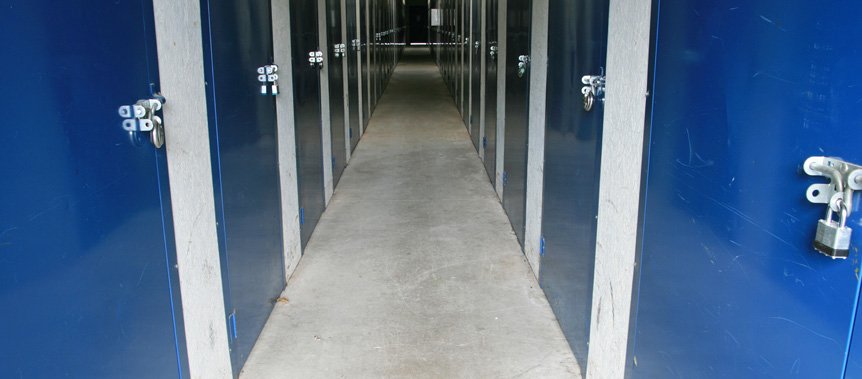Many items that go into storage are irreplaceable family heirlooms, collectables, or delicate antiques. Valuable items require extra care during packing as well as the right environment for storage. Proper handling and storage of such treasures can ensure that they remain in the same condition they were in before the packing process started.
General Tips for Storage of Valuable Items
Humidity Control
Humidity is an essential factor for consideration when storing certain collectibles and antiques. Wood, paintings, and paper need to have a sufficient amount of humidity in the air. If humidity is too low, such materials can crack, shrink, or become extremely brittle. If there is too much humidity, on the other hand, metal components can rust, mold can grow, and the environment attracts insects.
To safely store family heirlooms, collectibles, and other valuable items, humidity should be maintained at approximately 50 percent. At most hardware stores, you can buy a hygrometer, a tool to measure humidity levels. Checking on humidity levels will help to ensure that you choose the right location to store precious items.
Temperature Control
Extreme fluctuations in temperature are common in attics and garages. These are not good places for preserving valuable items in storage. Approximately 65 degrees is ideal for preservation. If you have a room that is cooler than other areas of your home year around, it may be the best place for you to store treasured items. A climate-controlled facility may be available that maintains about the same temperature, which could be even more perfect since storage wouldn’t take up any living space.
When Gradual Temperature Changes are Needed
Some antiques are very delicate and vulnerable to extreme swings in temperature. For instance, glazed ceramics and antique glass can develop small cracks in this type of situation more rapidly than what occurs naturally. In ceramics, the change is called “crazing.” Be mindful that gradual temperature changes may need to be strategically planned, when moving vulnerable items to a different location for storage.
Minimized Handling
Fine collectibles and antiques are also vulnerable to oils on the skin, which can cause deterioration. Just as museum curators wear cotton gloves when handling valuable items, you may want to do the same with excessive handling of antiques, especially during packing.
Avoid Harsh Light
Even when items are wrapped for storage, it’s important to keep them away from direct sunlight. The effects of harsh lighting can include fading the colors in fabrics and prints and speeding up of chemical reactions.
Tips for Storage of Valuables
Before preparing a valuable item for storage, take a photo of it and then affix the photo to the outside of the box or wrapping. This makes it easier to identify what is so carefully stored inside the meticulous packaging.
Quilts & Other Textiles
According to the Smithsonian Museum Conservation Institute, textiles that look stable can suddenly dissolve into dust. When handling textile family heirlooms and antiques, presume the fabric to be fragile. In the past, the process for creating fabrics was very different. Some processes were very unique to a specific era.
Antique textiles should be laid flat on a solid surface layered with archival quality paper.
Prepackaged heirloom storage kits are available for storage of quilts. For do-it-yourself storage, wrap the quilt with acid-free tissue paper. Fold it loosely and place it in a plastic storage box with a lid. For absorption of moisture, add a container of desiccant, a drying agent, to the box. Attach the photo of the item to the box with some tape. To give the quilt additional protection against insects, place it inside a plastic bag.
Mirrors & Artwork
Never use plastic wrap for artwork or valuable mirrors. Wrap each mirror or piece of artwork entirely in acid-free paper. Protect the corners using foam board and tape. Sandwich the heirloom between ¼” inch foam board cut slightly larger than the frame. Wrap the bundle with Kraft paper, which is heavy, brown, smooth wrapping paper. These items should never be stored flat. Store them vertically at least a few inches off the floor or on a shelf.
Glassware and China
Pack glassware and china in a small sturdy cardboard box. Each piece should be wrapped separately in either paper or bubble wrap. Use cardboard dividers between pieces of glassware so that the glasses can be packed in protective slots. Plates should be stored vertically, when possible. If stacked, there should be no more than four or five plates per box. Be sure that no heavy boxes or other items are stacked on top of boxes containing valuable glassware or china.
A Final Note
If packing away valuable antiques and family heirlooms for a potentially long period of time, consider taking an extra step in preservation. Include information and any known family stories with the package, so that future generations can feel the connection to the cherished items. They will better understand why the collectibles, heirlooms, pieces of artwork, and other delicate items are so carefully packed for storage.

